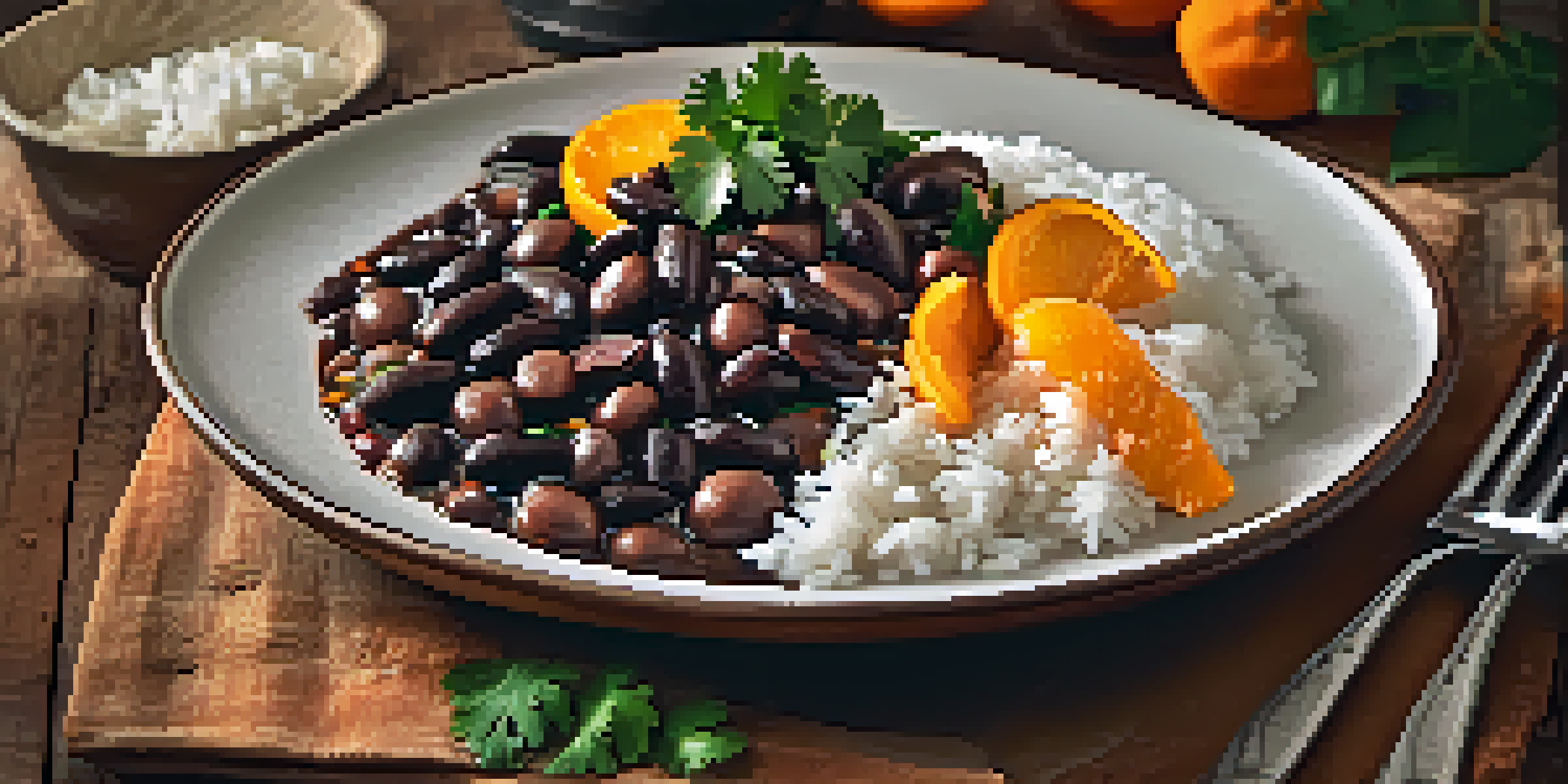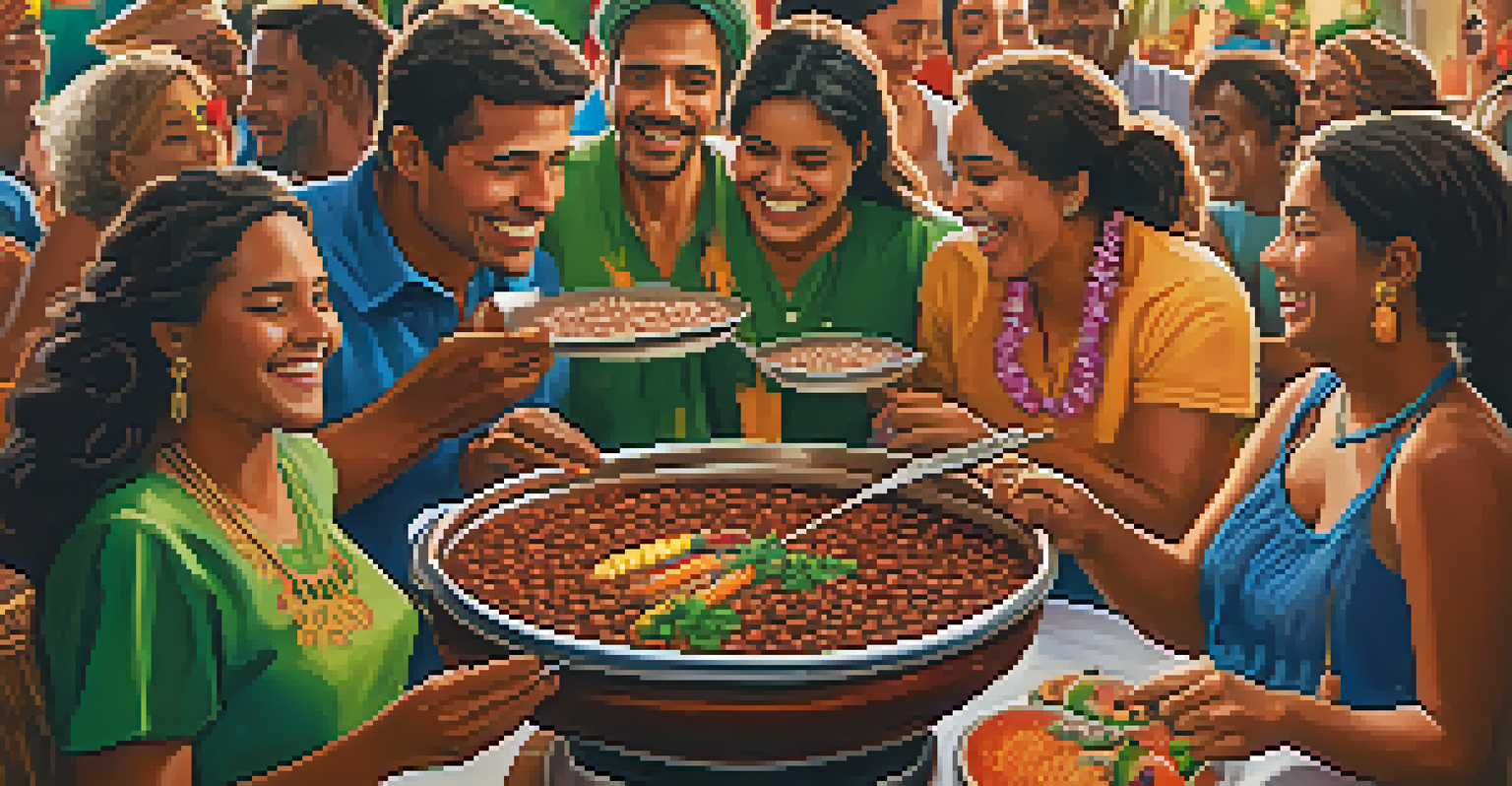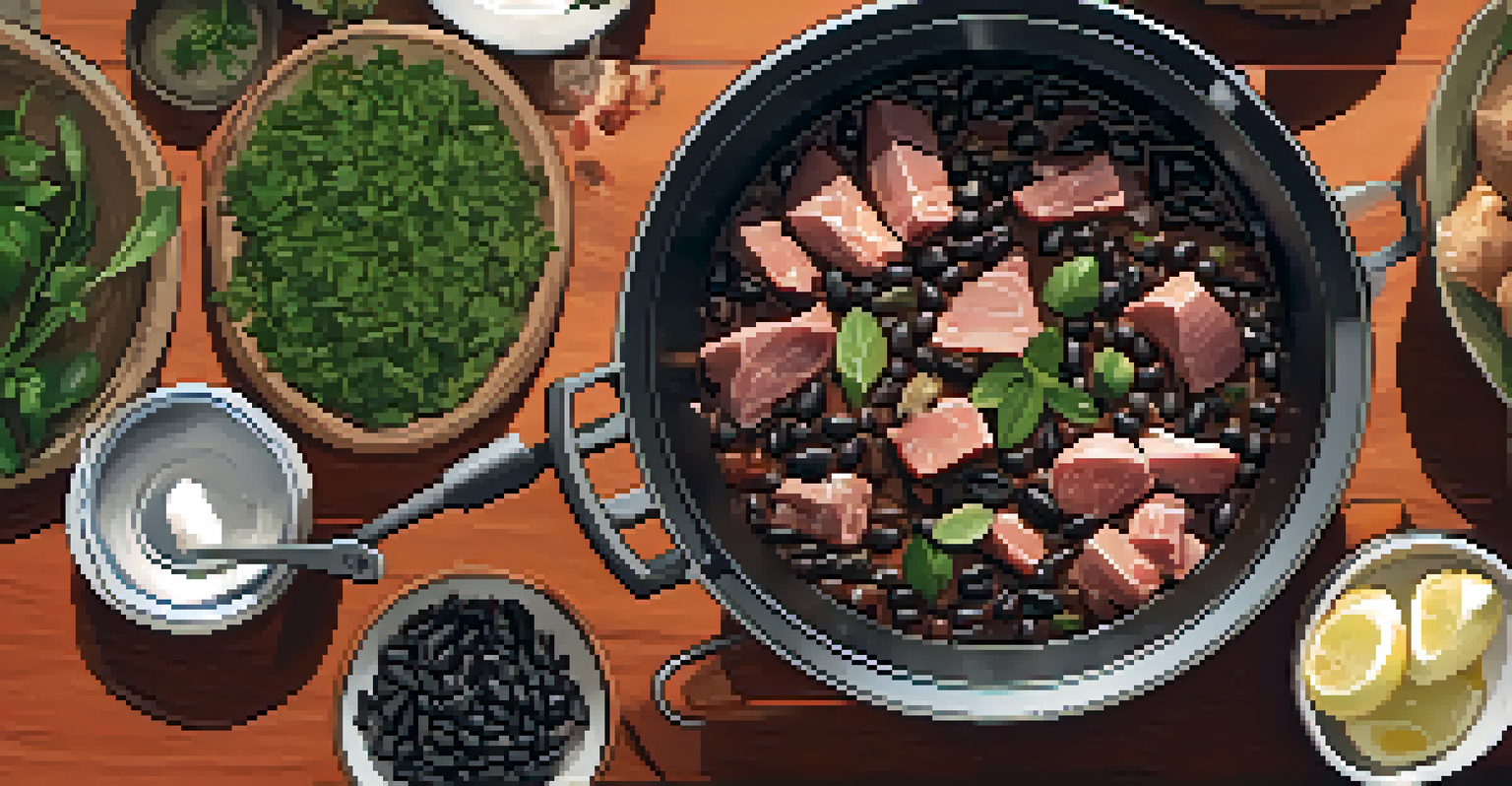The Art of Feijoada: Brazil’s National Dish Explored

What is Feijoada? A Delicious Overview
Feijoada is much more than just a meal; it’s a hearty stew that embodies the spirit of Brazil. Traditionally made with black beans and a variety of meats, this dish showcases the country’s diverse culinary heritage. Each region in Brazil puts its own twist on feijoada, adding local ingredients and flavors that reflect its unique identity.
Food is a central part of the human experience—it brings us together, creates memories, and tells our stories.
At its core, feijoada is a comfort food, often enjoyed during special gatherings and celebrations. Families come together to share this dish, making it a staple at festive occasions like Carnival and family reunions. Its rich flavors and communal nature make feijoada a symbol of Brazilian hospitality.
Whether served with rice, orange slices, and farofa (toasted cassava flour), or enjoyed on its own, feijoada is a dish that brings people together. It’s not just about savoring the food; it’s about the connections and memories created around the table.
The History Behind Feijoada’s Creation
Feijoada’s origins can be traced back to the 16th century when Portuguese settlers introduced the black bean to Brazil. The dish evolved over time, influenced by African slaves who adapted the recipe using available ingredients. This blend of cultures created a unique dish that symbolizes Brazil’s rich tapestry of traditions.

As the story goes, feijoada was initially a meal for those with modest means, made from leftover meats and beans. However, it gradually gained popularity among all social classes, becoming a beloved national dish. Today, feijoada represents both the struggle and resilience of Brazilian culture.
Feijoada: A Symbol of Togetherness
Feijoada is not just a dish; it embodies Brazilian hospitality and brings families and friends together during celebrations.
The history of feijoada is not just about food; it tells a story of integration, survival, and community. Each bite of this dish carries with it the narratives of those who contributed to its creation, making it a true reflection of Brazilian identity.
Key Ingredients: What Makes Feijoada Unique
At the heart of feijoada are its key ingredients: black beans, a variety of meats (like pork, beef, and sausage), and spices. The slow-cooking process allows the flavors to meld together, resulting in a rich, savory stew. Each ingredient plays a crucial role in defining the dish’s character and depth.
The sharing of food is a universal language that transcends cultural barriers.
In addition to the meats, other components like garlic, onion, and bay leaves enhance the overall taste, creating a symphony of flavors. The balance of smokiness from the meats and the earthiness of the beans is what makes feijoada truly special. It’s a dish that appeals to the senses, inviting you to dive in and savor every bite.
Regional variations also introduce local ingredients, such as tropical fruits or different types of beans, showcasing the diversity of Brazilian cuisine. This adaptability is part of what keeps feijoada alive and exciting, allowing each cook to put their personal touch on the dish.
How to Prepare Feijoada at Home
Making feijoada at home might seem daunting, but it’s easier than you think! Start by soaking black beans overnight to ensure they cook evenly. As you prepare the meats, remember that the key is to use a mix of cuts for a rich flavor profile, from pork ribs to smoked sausage.
Once your ingredients are prepped, it’s all about the slow cooking. Combine the beans and meats in a large pot, add your spices, and let it simmer for several hours. This long cooking time allows all the flavors to deepen and blend beautifully, resulting in that iconic taste of feijoada.
Cultural Roots of Feijoada
The dish's origins reflect a blend of Portuguese and African influences, making it a representation of Brazil's diverse culinary heritage.
Don’t forget the sides! Serve your feijoada with fluffy white rice, fresh orange slices, and farofa for a complete experience. The vibrant colors and variety of textures on the plate will not only delight your palate but also make for a beautiful presentation.
Feijoada: A Cultural Experience
Feijoada is more than just food; it’s a cultural event that brings people together. In Brazil, it’s common to host feijoada parties where friends and family gather to enjoy this traditional dish. These gatherings are filled with laughter, music, and camaraderie, reflecting the warmth of Brazilian culture.
During these feijoada feasts, it’s not unusual to hear samba music playing in the background, enhancing the festive atmosphere. The experience is a celebration of life, where everyone comes together to share stories and create lasting memories over a delicious meal.
Embracing feijoada is about embracing the spirit of community and connection. Each spoonful serves as a reminder of the importance of togetherness, making it a cherished tradition that continues to thrive in Brazilian society.
Feijoada Around the World: Global Adaptations
While feijoada is deeply rooted in Brazilian culture, its popularity has spread beyond the country’s borders. Internationally, chefs and home cooks alike have embraced this flavorful stew, often adapting it to local tastes and ingredients. This global love for feijoada showcases its versatility and appeal.
In places with large Brazilian communities, you’ll find feijoada served in restaurants and at cultural events, allowing people to experience a taste of Brazil. However, local versions may incorporate different meats or spices, reflecting the culinary preferences of the region.
Global Adaptations of Feijoada
Feijoada's popularity has transcended borders, with various international adaptations showcasing its versatility and appeal.
These adaptations enrich the feijoada experience, proving that food has the power to transcend borders. No matter where you are in the world, feijoada remains a dish that connects people through its delicious flavors and shared stories.
The Future of Feijoada: Preserving Tradition
As global culinary trends evolve, there’s a growing interest in preserving traditional dishes like feijoada. Chefs are now exploring ways to honor the dish’s roots while also innovating to meet modern tastes. This balance of tradition and innovation is essential for keeping feijoada relevant in today’s food landscape.
Educational initiatives and cooking classes are also helping to pass down the art of making feijoada to younger generations. By sharing the history and significance of this dish, communities can continue to celebrate and cherish their culinary heritage.

Ultimately, the future of feijoada lies in its ability to adapt while remaining true to its origins. As long as people gather around the table to enjoy this iconic dish, the spirit of feijoada will live on, fostering connections and celebrating Brazil’s rich cultural tapestry.